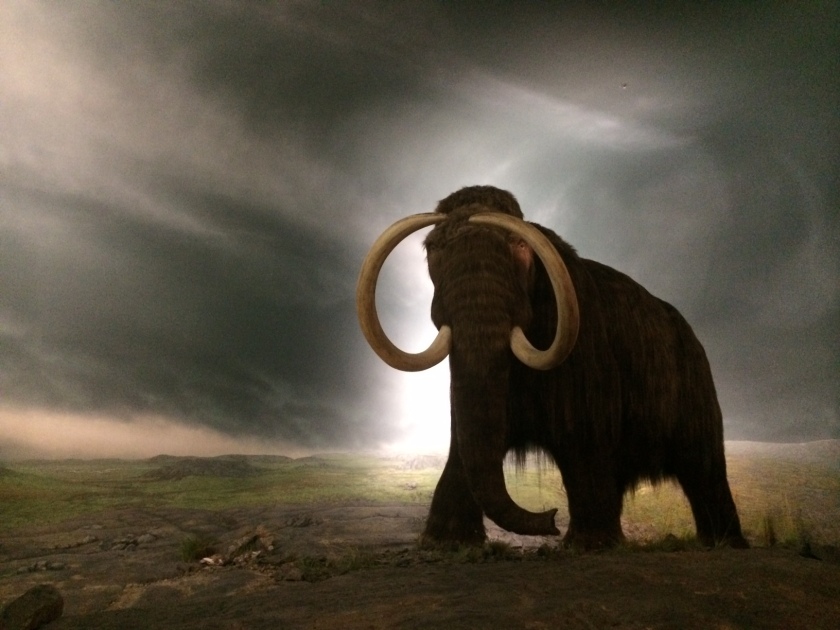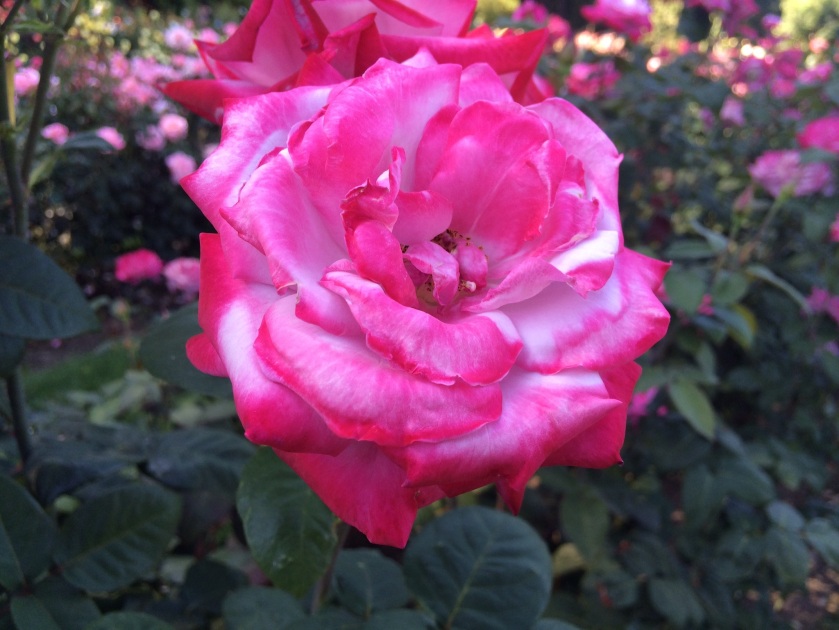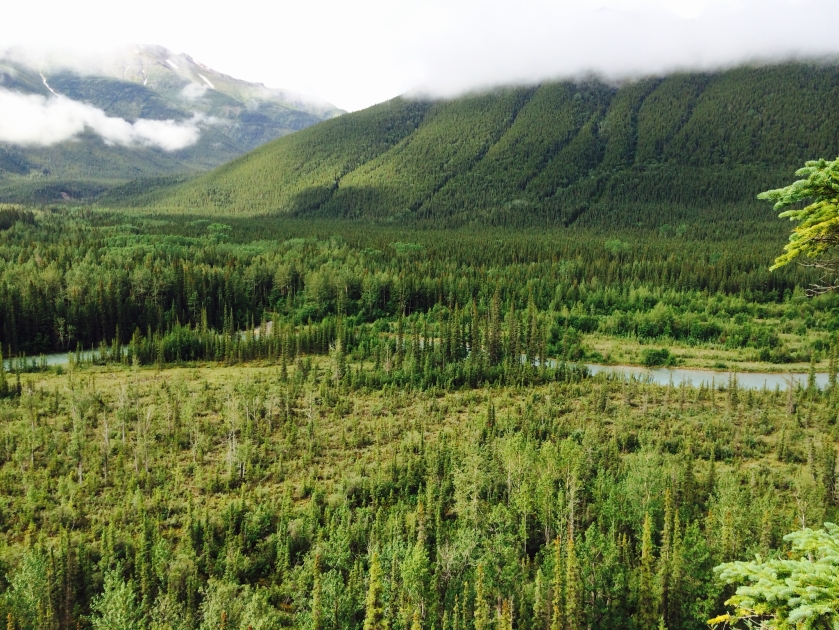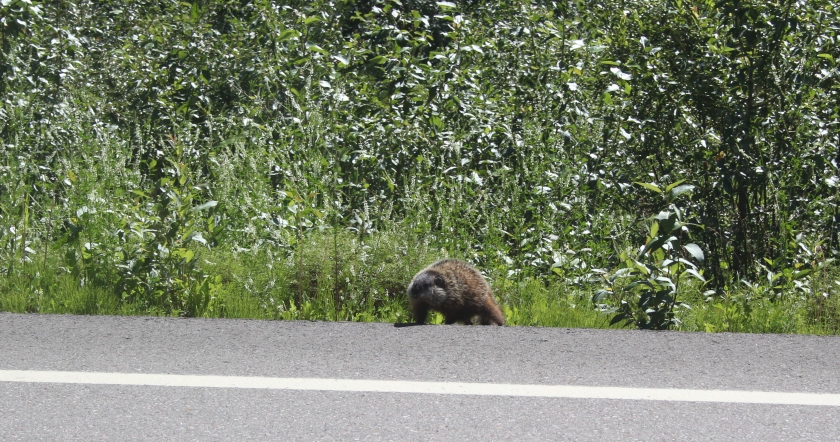
Taken by Andrew Mackay
All that is
rests
on myth and magic
tales, told by wizened elders
tracing stars
their lines
iridescent
grown firm as
steel.

Vine-laden trellises
bear witness
to those arriving
on a mist-marked morning
a brick pathway
unfurls
once straight
now
thorny tendrils hold
searing colors
so vivid that their
full luster stays
until the ship sails
to what lies beyond
this
mortal coil.

By the way, you can click on any of these travel photos to see the big version. These are all huge pictures, you just have to keep them to a certain width to fit within the blog template.
Coming back into civilization, it is impressive how quickly you go from having some sense of familiarity with strangers to gaining complete detachment and anonymity. For most of this trip, there has been only one major road, with junctions often hundreds of miles apart. Thus you may pass a car or some cyclists, or they may pass you. At some point down the line, you will see them again. There is a sense of shared journey even if you don’t know anything beyond their car and the origin of their license plates (I played the game, and ended up with 34 US states and nine Canadian provinces).
Whistler is a giant tourist facility, even in summer. Besides mountain bikers and upscale shopping types, huge summer programs ferry blue-hatted upper-middle class children to the chair lifts and from activity to activity. This is the familiar feeling: to be lost amidst a large crowd going a million different directions. Even at home in the Bay Area, this is the environment I live in. At some point there are too many people and too many agendas and destinations. It feels odd to come from rural British Columbia and enter the system as a temporary outsider. No wonder people have culture shock when they move to a city, or from a rural environment to a developed country.

The natural scenery is now behind me, to be replaced tomorrow with the spectacle of the Vancouver Celebration of Light.

Western British Columbia is some of the roughest country in North America. Any traveler has to drive east into the main road system, as there is no road down the coast to Vancouver. That means little internet, no cell service, and towns that challenge an urban or suburban dweller’s idea of scale.

Stewart, B.C., for instance, is the sister town of Hyder, Alaska. The latter is the only SE Alaskan town you can reach by road, and has a population of about 85. Stewart is immense in comparison, at just under 500.
Despite that, the almost-wilderness of the west is much preferred to the oil and gas boomtowns in Alberta and northeastern B.C. While both sport many small towns, the coast has been settled longer. Stewart is in mining country, and is surrounded by historic buildings. A place like Fort Nelson or Grade Prairie has no history, they were built yesterday. Anything cultural is superior in these settled towns, as businesses and traditions have had generations to germinate and thrive. Notably the food. Oil country is a mix of fast food, bar food, and the occasional high-minded restaurant that seems unsure of its clientele or purpose. Stewart has the superb Bitter Creek Cafe, which would gel with upper-tier San Francisco eateries in terms of decor and quality. Before that, the Bell 2 Lodge on the way south from Watson Lake, Yukon has an incredible restaurant that understood the beauty of a butternut squash puree not nuked by heavy cream. If my hometown had one excellent restaurant for every 500 people, I would be ecstatic.

One trip, two provinces, two Canadian territories, and two U.S. states. Today I saw my first traffic light in six days, and 980 miles. What you learn about any rural community is that it’s not about size, but trajectory. Some energy boomtowns are growing so fast that you will routinely see 18-wheelers hauling entire prefabricated houses. Often the largest settlement is the worker’s camp just off the highway, rather than any established towns. Others are in sharp decline, on their way to ghost town status. There were people, once, but they have died or moved on to better and brighter opportunities.
Most, however, lie on the chain that ties ascendency to decay. They exist. In time, many mining communities like Anyox fell apart, their economies stalled and the sky came crashing down. Rule of thumb dictates that given time, what towns do survive will eventually become historic. Places like Stewart get a sort of interest added each year. Just like mass-produced crap from the 50s gain value in part because much of what was originally made was thrown away, th

Like many long road trips, the path reveals contrasts. Look west, and it’s the unaccessible coastal range of B.C., look east and there is a massive set of power lines been constructed across the province to assist with energy extraction. Look south, it’s the vibrant and diverse city of Vancouver and its metropolitan area. Look north, and witness a series of First Nation communities that still deal with a great deal of inequity and isolation.
The northwest of the U.S. and Canada are a great experience, and there is some value in driving a circle route, rather than cutting across the provinces between Jasper and Vancouver. Beauty can often come from a view at a remote turnout. It doesn’t always show up in a guidebook.
Edit: Per the comment posted, I will reformulate what I said about Nelson and Prairie. Part of history is the present moment. What both communities have right now is sprawl and a whole town geared towards business executives, with tourists as a distant afterthought. This is unfortunate, as one is the main city before the Alaska Highway, and another is on the Highway itself. In terms of poorly-planned sprawl and hostility to pedestrians, it reminds me much of interior California, or the main freeways going through the American South.
Perhaps these communities will regain a sense of heritage that isn’t drowned in giant rigs and clearcutting. One would hope they are not consumed by the oil boom, and their scenery and appeal is not irrevocably harmed. Though Grande Prairie is quite a bit older than Stewart, no part of it would give you that idea. It’s one thing to have no history and be a sprawltastic community, it’s another to have history but be indistinguishable from one that does not.

After hundreds of miles of signs telling us of possible wildlife, we finally saw some yesterday and today. The beaver was spotted just short of the British Columbia-Northwest Territories border on Hwy 77. The bears were seen around Prophet River, going north to Fort Nelson, B.C.
Though mostly associated with Alberta, northern and eastern British Columbia are heavily impacted by the oil and gas trade. Fort Nelson, where we are staying tonight, is a boomtown of sorts. Though there is plenty of forest, it is filled with service roads. Often the trees are a thin layer disguising wells or, in a pretty obvious case, a pipeline.
Because the oil infrastructure doesn’t require a lot of personnel after it’s set up and running, B.C. and Alberta have are unusual in that there are still very few large towns, but these small settlements are surrounded with billions of dollars of technology.
